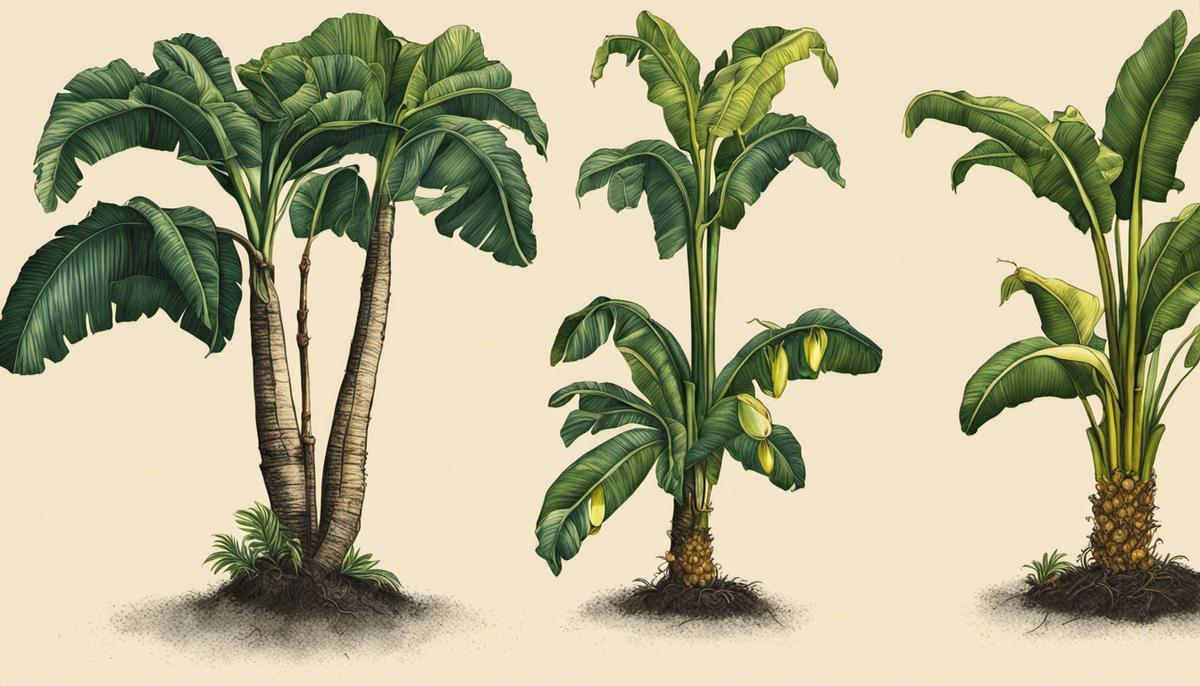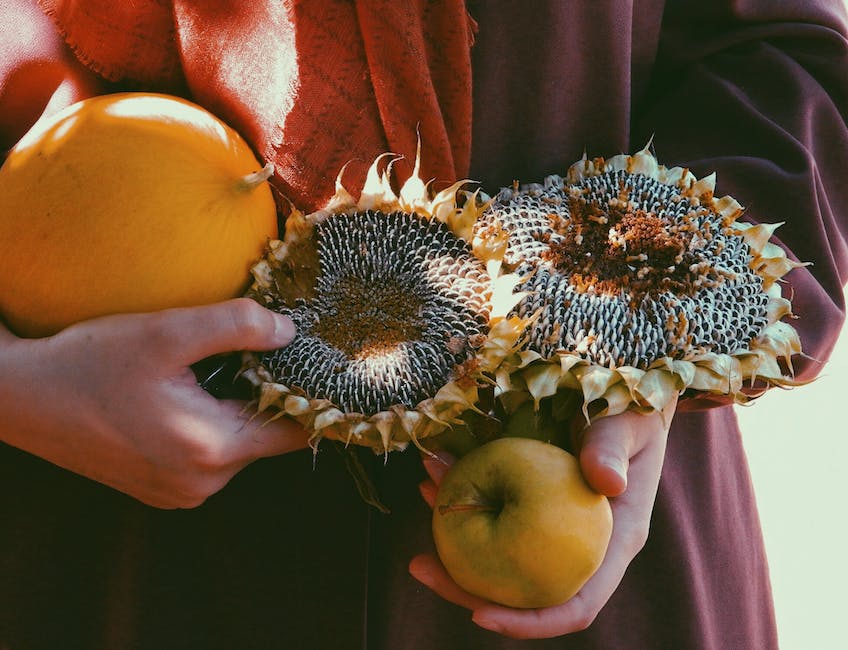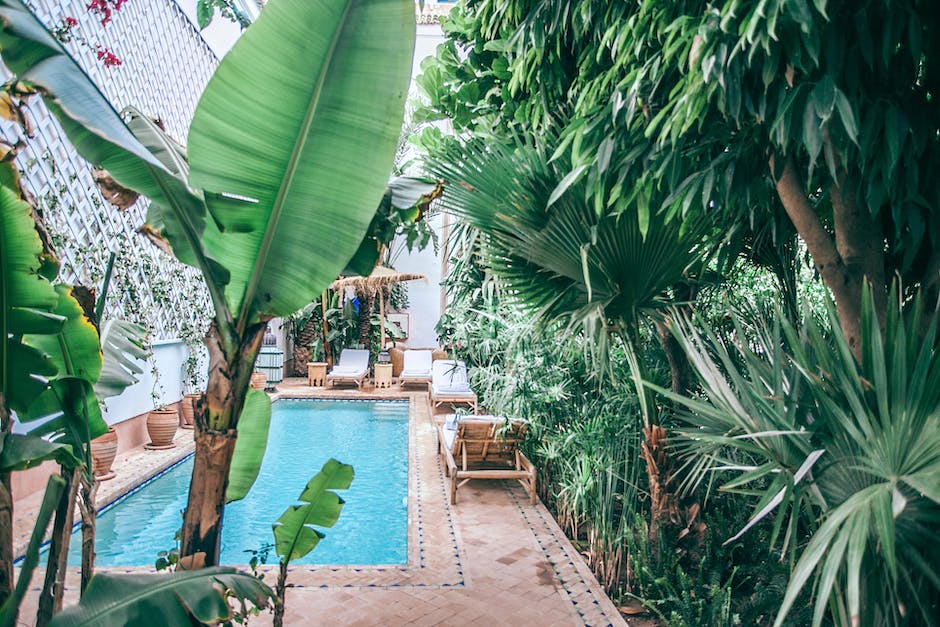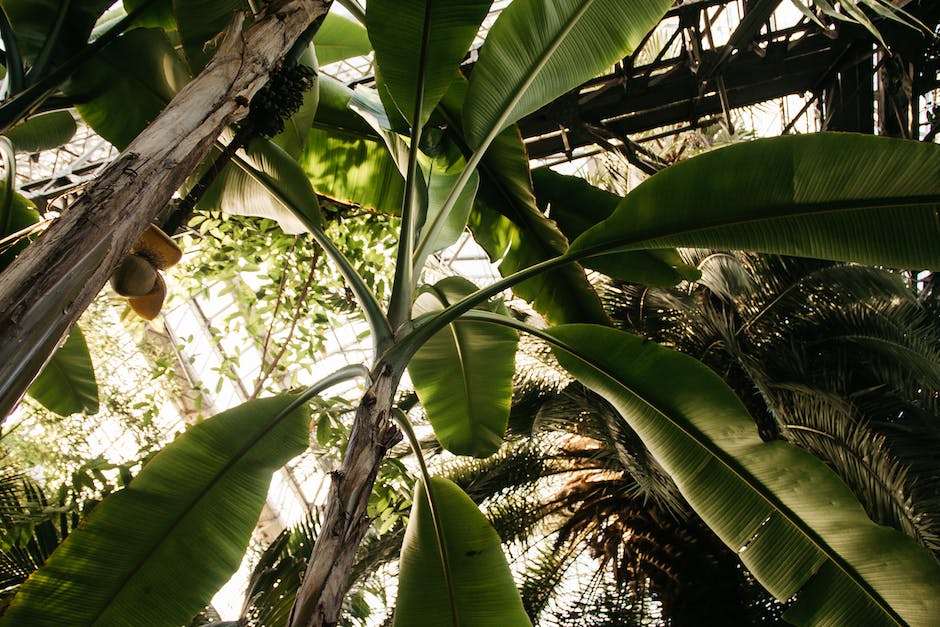Growing Banana Trees: Time and Tips

The fascinating journey of a banana from a simple seed to a thriving fruit-bearing tree is filled with multiple stages and it takes certain conditions to yield a healthy crop. In this exploration, we delve into the life cycle of a banana tree, creating a comprehensive understanding of its various growth phases. We will also scrutinize key factors such as sunlight, temperature, water, soil and care that significantly impact banana tree growth. Additionally, this discussion will provide insight into various care techniques designed to support the ideal growth of banana trees.
Understanding Banana Tree Life Cycle
Title: “Journey Into the Wonderful World of Banana Trees: A Stages-of-Growth Guide”
Bursting with energy and eager to embrace a topic that brightens the lives of many, we delve headfirst into the enchanting lifecycle of the beloved banana tree. Like witnessing a ballet unfold, tracking the distinct stages of this tropical marvel is truly an awe-inspiring spectacle. Rest assured, the step-by-step process of nurturing a banana tree from sprouting shoot to ripe fruit is a story bound to captivate every horticultural heart.
Stage 1 – Germination:
This is where the magic sparks to life. To envision this process, transport yourself to a tropical rainforest where persistent, warm rains nurture buried banana seeds. In approximately 2 to 15 days, the embryonic banana shoot courageously emerges from the soil, heralding the start of a mesmerizing journey.
Stage 2 – Seedling:
Over the course of the next four months, as the radiant sun and bountiful rain continue their symphony, our tiny seedling blossoms into a full-fledged plantlet. Don’t underestimate this frail-looking fellow! The young banana tree is growing robust root systems, preparing for the glorious fruiting stage to ensue.
Stage 3 – Vegetative:
Stepping into the six to nine-month mark, the banana tree is a futuristic spaceship launching towards the sky. Beneath the elongated leaves, the ‘psuedostem’ (a tall structure mimicking a tree trunk) emerges. Each leaf unfurling from the center brings us another step closer to the crowning glory.
Stage 4 – Flowering:
The true spectacle starts here when the banana tree reveals its first blossom after 9 to 12 months. Gradually, the beautiful, large flower bud droops down due to its weight, baring the first hand of bananas. Smaller flowers hidden under bracts later turn into hands of bananas stacked just like cards.
Stage 5 – Fruiting:
The next two to four months is the period of joyous anticipation! The banana fruits (‘fingers’) mature in stages, the first hand maturing before the subsequent ones. And just like that, about 15 to 18 months after sowing that seed, the banana tree dons its golden sleeves, ready to be savored and celebrated.
But the journey doesn’t end with the fruits; the death of the pseudostem makes space for the banana plant’s offspring, little suckers that will start their cycle anew. Isn’t this growth cycle a fascinating spectacle? Let’s continue exploring more about these green giants that grace our fruit bowls and keep up the botanical passion! Now you’re equipped with the stages of a banana tree’s growth, may it enrich your tropical gardening endeavors. Happy growing!

Factors Impacting Banana Tree Growth
Uncovering the influences on Banana Tree Growth: Environmental Conditions and Care
When considering the growth speed of a banana tree, one must remove the idea of standard growth rates. This is because a multitude of factors can influence a banana tree’s developmental pace. Not only that, but understanding these different variables can arm you, the grand banana cultivator, with the necessary knowledge to best care for your produce. Ready to peel back the mystery? Perfect, let’s jump into it!
Firstly, it’s key to remember that banana trees are tropical plants. That means the weather conditions they thrive in are warm and humid climates. Therefore, if the temperatures range between 78 to 82 degrees Fahrenheit in the daytime and do not go below 67 degrees Fahrenheit at night, you’ve paved the way for optimal tree growth.
Still, Mother Nature can sometimes have her own plans. Like, say, the occasional cold snap. Fear not! With several inches of mulch on top, you can provide thermal insulation against the cold. The mulch not only shields the roots from extreme temperatures, but also retains moisture during warmer months and adds nutrients to the soil.
Speaking of moisture, banana trees are water-loving plants. They require regular, deep watering to stay healthy. A lack of water can slow growth considerably. However, beware of overwatering, as this can lead to root rot.
Next on our list is sunlight. These green beauties long for full sunlight exposure. This is crucial for photosynthesis, helping the tree convert light into the energy it needs to grow. Lack of sunlight can stunt its development, causing slower growth rates. Apart from sunlight, another vital yet often underestimated factor is the soil quality. A soil rich in organic matter that drains well is loved by banana trees. Acidic to slightly acidic soils, pH of around 5.5-6.5, is where the magic happens.
Nutrient-wise, banana trees are big fans of nitrogen, which prompts foliage growth. Additionally, potassium is essential and benefits fruit production. Regular feeding with a well-balanced fertilizer, especially during the growing period, helps the tree flourish.
Don’t forget the importance of good pest control practices. Banana trees have a number of formidable enemies, including nematodes, borers, and aphids. These pests can cause significant damage, leading to a slower growth rate, and in extreme cases, even death of the tree.
In conclusion, optimal banana tree growth depends on a harmonious blend of the right environmental conditions and attentive caregiving. By understanding and managing these factors, your tropical beauties will grow not only faster but healthier too. Your banana hobby is much more than a pastime; it’s a nurturing dance between nature and nurture. Get those gloves on, keep these factors in check, and let the banana harmony begin!

Caring for Banana Trees
The Bananarama: Caring for Your Banana Tree Post-Flowering
Whether it’s just sprouted its first fruit or raising its newest offspring, the banana tree truly steals the show in any garden setting. Kudos to you for already mastering the stages of germination, nurturing the seedling, supporting vegetative growth stages, and celebrating flower and fruit emergence! You’ve clearly come a long way with understanding the beauty, complexity, and resilience of the banana tree. And just like any dedicated hobbyist, there’s always a tip or two to pick up to truly perfect your green thumbs. Ever wondered how you can take your banana tree care a notch higher post-fruiting? Let’s explore!
Pruning – Your Green Samaritan Stitch
Once your banana plant has fruited, one of the first things you need to do is execute a form of plant triage. Post-fruiting, the parent tree will start to die, which is entirely natural. Pruning back the dead and excess parts of the tree is crucial here. Carefully cut the mother plant down to about 2.5 feet, allowing room for new shoots or ‘pups’ to grow. This action will help direct nutrients towards the healthy growth of its offspring. Remember, pruning is your green samaritan stitch, saving the plant from further perishing while sprouting new life!
Mulching – The much-valued blanket keeps moist and warmth intact
Mulching is another pivotal part of banana tree care. During prime growing seasons, the area around your banana plant can dry out quickly. Applying a thick layer (about 3-4 inches) of organic mulch around the base will help retain moisture, regulate soil temperature, and boost its nutrient content. The decomposing mulch also fortifies the soil with microorganisms beneficial to plant health.
Consistent Feeding – The power of routine care
Post fruiting seasons call for timely but consistent feeding. The nutrient needs of a banana tree don’t stop after it brings forth its fruits. Regular additions of a balanced, slow-release fertilizer with essential macro and micronutrients will support the continued growth of the banana plant, particularly its ‘puppies’. Feeding ensures a euphoric transition from one generation of the plant to another.
Monitoring – Play the patient observer!
While all these actions will indeed boost your banana tree’s health and longevity, always remember that observing your plant is perhaps the most vital aspect. Regularly monitor your banana tree for signs of stress, under or over-watering, pest infestation, or deficiencies that could jeopardize the health and growth of your precious banana trees.
In the end, every banana tree is a story of patience, growth, and dedicated care. Your garden is your sanctuary, and every banana tree is a testament to your passion and commitment. Always remember, the best banana trees are those that have been loved the most.
Onwards to a green, banana-filled horizon!

Understanding the banana tree life cycle unlocks a better perspective on the time it takes for growth. It enables us to appreciate the role played by different factors like sunlight, temperature, and care routines that impact their development. The knowledge of these factors and care techniques not only assists in cultivating healthier banana trees but also potentially shortens the time it takes to bear fruit. Ultimately, the banana tree growth journey teaches us a lesson in nature’s rhythm and illustrates the awe-inspiring miracles a tiny seed can produce under perfect conditions.



